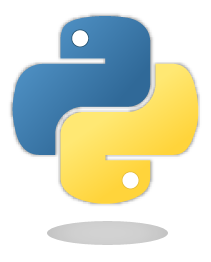FULL STACK PYTHON DEVELOPER
FULL STACK PYTHON
DEVELOPER
ACLM Institute In Vaishali Ghaziabad and Noida
Python is a high-level, general-purpose programming language.
Python is a user-friendly, versatile
programming language known for its clean syntax, making it ideal for
Web development, Data science, Automation,
and Beyond.
LEARN TO BUILD, DEPLOY AND OPERATE
PYTHON APPLICATIONS
You’re knee deep in learning full stack Python developer programming. The syntax is starting to make sense.
The first few ahh-ha! moments hit you as you learn to use conditional statements, for loops
and classes while coding with the open source libraries that make Python such an amazing programming ecosystem.
Now you want to take your initial Python knowledge and make something real,
like a web application to show off to friends or sell as a service to customers.
That’s where Full Stack Python comes in. You have come to the right place to learn
everything you need to create, deploy and operate Python-powered applications.
Full Stack Python developer is an open source book that explains technical concepts in plain language.
Read everything online for free or purchase the Supporter’s Edition for nicely-formatted ebook

(PDF, EPUB, MOBI) versions.
This guide branches out on topic because your learning requirements
depend on what you’re working on. Choose a topic from the links below or view the full table
of contents to see even more subjects you can learn.
WHAT DO YOU NEED TO LEARN FIRST
FULL STACK PYTHON
DEVELOPER?
1. Introduction
1.1- Learning Programming
- The Python Language
- Why Use Python?
- Python 2 or 3?
- Enterprise Python
1.2-Enterprise Python
- Companies Using Python
- Best Python Resources
- Must-watch Python VideosPodcasts
2. Development Environments
2.1-Text Editors and IDEs
- Vim
- Emacs
- Subline Text
- PyCharm
- Jupyter Notebook
2.2- Shells
- Bourne-again shell (Bash)
- Zsh
- PowerShell
2.3-Terminal multiplexers
- tmus
- Screen
2.4- Environment configuration
- Application dependencies
- virtual enviroments (virtualenvs)
- Localhost tunnels
2.5-Source control
- Git
- Mercurial
3. Data
3.1-Relational databases
- PostgreSQL
- MySQL
- SQLite
3.2-Object-relational mappers
- SQLAlchemy
- Peewee
- Django ORM
- Pony ORM
3.3- NoSQL
- Redis
- Mongo DB
- Apache Cassandra
- Neo4j
3.4-Data Analysis
- Pandas
- SciPy & Numpy
3.5-Data visualization
- Bokeh
- d3.js
- Matplotlib
3.6-Markup Language
- Markdown
- reStructured Text
4. Web Development
4.1- Web Frameworks
- Django
- Flash
- Bottle
- Pyramid
- TurboGears
- Falcon
- Morepath
- Sanic
- Other Web frameworks
4.2- Template Engines
- Jinja2
- Mako
- Django Templates
4.3- Web design
- HTML
- CSS
- Responsive Design
- Minification
4.4- CSS Frameworks
- Bootstrap
- Foundation
4.5- JavaScript
- React
- Vue.js
- Angular
4.6- Task queues
- Celery
- Redis Queue (RQ)
- Dramatiq
4.7- Static site generators
- Pelican
- Lektor
- MkDocs
4.8- Testing
- Unit testing
- Integration testing
- Debugging
- Code Metrics
4.9- Networking
- HTTPS
- WebSockets
- WebRTC
4.10- Web APIs
- Microservices
- Webhooks
- Bots
4.11- API creation
- API Frameworks
- Django REST Framework
4.12- API integration
- Twilio
- Stripe
- Slack
- Okta
4.13- Web application security
- SQL injection
- Cross-Site Request Forgery
5. Web App Deployment
5.1- Hosting
- Servers
- Static content
- Content Delivery Networks (CDNs)
5.2- Virtual Private Servers (VPSs)
- Linode
- DigitalOcean
- Lightsail
5.3- Platform-as-a-Service
- Heroku
- PythonAnywhere
- AWS Code Star
5.4-Operating systems
- Ubuntu Linux
- macOS
- Free BSD
- Windows
5.5- Web servers
- Apache HTTP Server
- Nginx
- Caddy
5.6- WSGI servers
- Green Unicorn
- uWSGI
- mod_wsgi
5.7- Continuous integration
- Jenkins
- GoCD
5.8-Configuration management
- Ansible
- Salt
5.9- Containers
- Docker
- Kubernetes
5.10- Serverless Architectures
- AWS Lambda
- Azure Functions
- Google Cloud Functions
6. DevOps
6.1- Monitoring
- Datadog
- Prometheus
- Rollbar
- Sentry
6.2- Web App Performance
- Logging
- Caching
- Web Analytics
7. Meta
- Change log
- About the author
- What “Full Stack” means
- Page statuses
- Future directions
KEY FEATURES OF FULL STACK PYTHON DEVELOPER:
- Easy to Read and Write: Python’s syntax is clear and intuitive, making it accessible for beginners and efficient for experienced programmers.
- Interpreted Language: Python code is executed line by line, which makes debugging easier.
- Dynamically Typed: You don’t need to declare variable types explicitly; Python figures it out at runtime.
- Extensive Standard Library: Python’s standard library includes modules for various tasks such as web development, data analysis, and machine learning.
- Community Support: Python has a large and active community, which means plenty of resources, libraries, and frameworks are available.
- Cross-Platform: Python runs on various platforms including Windows, macOS, and Linux.
Common Uses of Python:-
- Web Development: Frameworks like Django and Flask make it easy to build web applications.
- Data Science and Machine Learning: Libraries like Pandas, NumPy, and Scikit-Learn are widely used for data analysis and modeling.
- Automation and Scripting: Python is often used to automate repetitive tasks.
- Software Development: Python can be used to develop both desktop and server-side applications.
- Education: Due to its simplicity, Python is often used as a first programming language in educational settings.
ABOUT FULL STACK PYTHON DEVELOPER
>>>Python is a high-level, interpreted programming language known for its simplicity and readability.
Created by Guido van Rossum and first released in 1991,
Python has rapidly become one of the most popular programming
languages in the world. Its design philosophy emphasizes code
readability with its use of significant indentation, making it easier to learn and use.
>>> Python Software Foundation
The mission of the Python Software Foundation is to promote, protect, and advance the Python programming

language, and to support and facilitate the growth of a diverse and international community of Python
programmers. Learn more